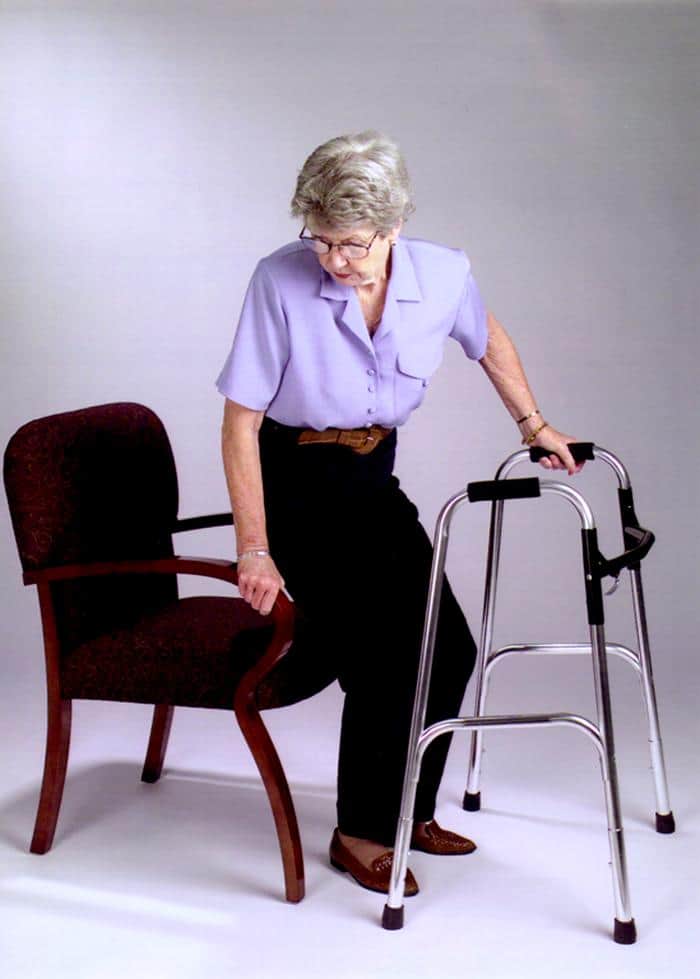 The widow of a 75-year-old Orland Park man who died following at least 28 separate nursing home falls has filed a wrongful death lawsuit against a Joliet long-term care facility. While litigation in this matter is still in the preliminary stages, the incident highlights how nursing home falls may be evidence of neglect.
The widow of a 75-year-old Orland Park man who died following at least 28 separate nursing home falls has filed a wrongful death lawsuit against a Joliet long-term care facility. While litigation in this matter is still in the preliminary stages, the incident highlights how nursing home falls may be evidence of neglect.
28 Separate Falls
On January 31, 2017, Edward Casper was admitted to the Spring Creek Nursing and Rehab Center in Joliet, IL to receive skilled nursing and long-term care in the wake of a recent right hip surgery. According to his widow’s lawsuit, the staff had identified Mr. Casper as “at risk for falls, behavioral changes due to dementia, and increased cognitive impairment.”
Despite the facility’s apparent understanding that Mr. Casper was a high risk for falls and resulting injury or re-injury, the lawsuit alleges that Mr. Casper suffered at least 28 separate falls during his tenure at Spring Creek Nursing. The last of Mr. Casper’s nursing home falls reportedly occurred on March 5, when he fell out of his bed and onto the floor, sustaining injuries to his left hip. Due to the severity of Mr. Casper’s injuries, he was transferred to a hospital, where he was diagnosed with a left hip fracture that required him to undergo additional surgery. Mr. Casper subsequently died on April 6.
Failure to Monitor
In pursuing a wrongful death lawsuit in this matter, Mrs. Casper’s attorneys accused Spring Creek Nursing of failing to monitor Mr. Casper properly during his admittance at the facility and of failing to provide adequately for his safety, given his known propensity to fall secondary to mental impairment and recent right hip injury.
As a result of Spring Creek Nursing’s alleged failure to monitor Mr. Casper, the lawsuit charges that the facility permitted him to sustain injuries to his left hip, leaving Mrs. Casper “liable for large sums of money for medical expenses and hospital treatment.” Mrs. Casper’s attorneys also noted that Mr. Casper suffered from “numerous bedsores,” an apparent sign that medical staff had failed to reposition and care for him properly.
Because of the totality of this alleged neglect, the lawsuit contends that Spring Creek Nursing caused or contributed to Mr. Casper’s death, for which Mrs. Casper is seeking a judgment in excess of $50,000.00 plus attorneys’ fees.
Nursing Home Falls and Neglect
Americans are living longer, and with this longevity comes the need for nursing homes. An estimated 1.4 million people are currently residing in more than 15,000 nursing homes across the United States. According to the Illinois Department of Public Health, Illinois alone has approximately 1,200 long-term care facilities with more than 100,000 residents. Americans trust these facilities to care for their elderly family members. A significant part of that care involves the proper supervision and monitoring of residents to make sure that they do not injure themselves. Nursing home falls, in particular, may be a sign of a facility’s neglect of its patients.
As in the apparent case of Mr. Casper, many elderly people have a greater tendency to fall down, and they are more likely to injure themselves seriously when they do. This propensity to fall occurs for a variety of reasons, including illness, medication complications, muscular atrophy, loss of bone density, poor vision, or preexisting impaired walking ability because of a prior condition or injury, all of which could make it more difficult to get around safely.
Knowing this to be the case, nursing homes have a heightened responsibility to implement fall prevention programs for residents with these tendencies. A typical program should include the following:
- Assessment – When new patients are admitted, the staff must evaluate their ability to walk safely and steadily, gauge their propensity towards falling, and determine proper methods for preventing these potentially dangerous incidents. Reassessments should occur on a periodic basic, particularly when a patient experiences a fall within the facility.
- Careful Monitoring – Those who have been determined to be a fall risk must receive heightened attention and supervision from the staff. In certain cases, staff should be available to physically assist these patients, including with trips to and from the bathroom.
- Assistive Devices – At-risk patients should be equipped with appropriate devices to prevent them from falling, both for themselves and for their rooms. These may include canes or walkers, non-skid footwear, and guardrails for beds.
Failure to take sufficient steps to prevent serious falls of their residents, especially those with a known propensity or history of such falls, could constitute nursing home neglect.
Nursing Home Neglect Lawyers
If you or your loved one has suffered serious injuries as a result of nursing home falls, you may be able to pursue litigation against the nursing home for its negligence. In seeking damages for nursing home neglect, many find that they benefit from the help and guidance of experienced lawyers, like the nursing home neglect lawyers at GWC Injury Lawyers, Illinois’ largest Personal Injury and Workers’ Compensation law firm.
For more than thirty years, GWC Injury Lawyers’s Chicago nursing home neglect lawyers have been helping to fight for the rights of patients in Illinois. They are not intimidated by the insurance companies that represent many nursing homes. Our firm is well known by many insurance agencies and has a hard-won reputation of fighting for the MAXIMUM amount of compensation for our clients.
If you or a loved one has been the victim of nursing home neglect, contact our office today to schedule a free consultation with one of our attorneys to see if you may be eligible for financial compensation. Call us at (312) 464-1234 or click here to chat with one of our representatives.
<< BACK TO BLOG POSTS